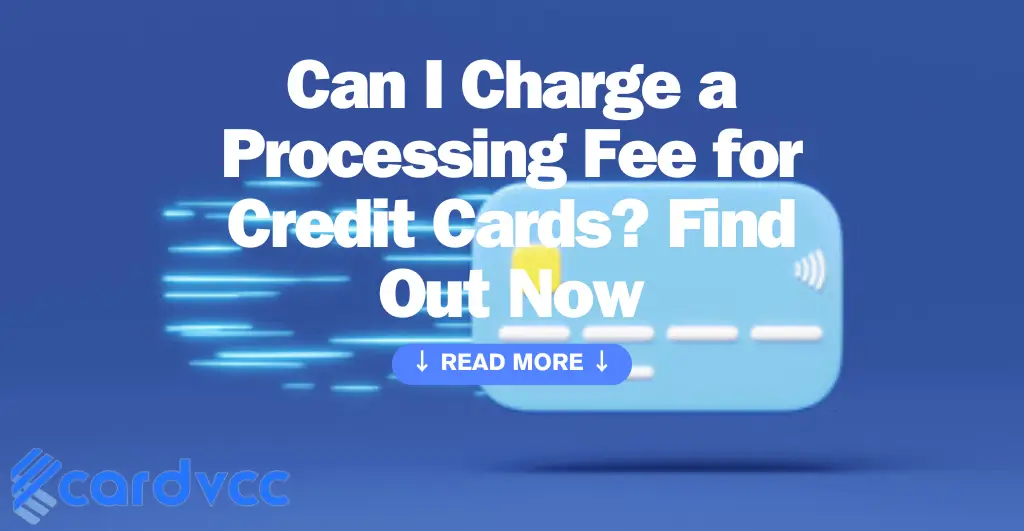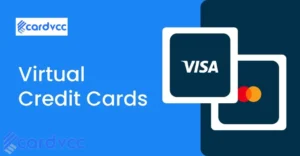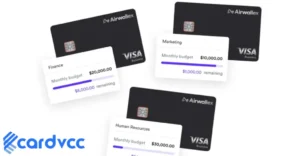Yes, you can charge a processing fee for credit cards. Ensure compliance with state laws and credit card company rules.

Charging a processing fee for credit cards can help businesses offset transaction costs. Many merchants find this practice beneficial, especially when dealing with high-volume sales. Before implementing, it’s essential to understand the legal requirements in your state. Some states have specific regulations regarding surcharges.
Always stay informed about credit card company policies to avoid penalties. Clear communication with customers is also crucial. Inform them about the fee upfront to maintain transparency and trust. By doing so, businesses can manage expenses while maintaining good customer relations. Charging a processing fee, when done correctly, can be a practical financial strategy for many businesses.
Legal Aspects
Charging a processing fee for credit cards can be tricky. Knowing the legal aspects is crucial. This section covers federal and state laws.
Federal Laws
The Durbin Amendment regulates debit card transaction fees. The Truth in Lending Act affects credit card charges. Businesses must follow these federal laws to avoid penalties.
- Truth in Lending Act: Ensures transparency in credit card fees.
- Durbin Amendment: Limits debit card transaction fees.
- Dodd-Frank Act: Provides guidelines for card processing fees.
State Regulations
State laws vary regarding credit card processing fees. Some states prohibit surcharges. Others allow them with conditions.
| State | Regulation |
|---|---|
| California | Prohibits surcharges on credit card transactions. |
| Texas | Allows surcharges with clear disclosure. |
| New York | Requires notice of additional fees. |
Know your state’s regulations to avoid legal issues. Consult legal experts if unsure.
Credit Card Agreements
Understanding credit card agreements is crucial for merchants. These agreements outline the terms and conditions for processing credit card payments. Each credit card company has its own set of rules.
Merchant Contracts
Merchants sign contracts with payment processors. These contracts often specify whether processing fees can be charged. The contract will detail the allowed fees and conditions.
| Term | Explanation |
|---|---|
| Processing Fee | A charge for handling a credit card payment. |
| Compliance | Adhering to rules set by credit card companies. |
Card Network Rules
Each card network, like Visa or MasterCard, has its own rules. These rules specify if merchants can charge a processing fee. Some networks allow it, but there are limits and conditions.
For example:
- Visa: Allows surcharges but limits the amount.
- MasterCard: Similar rules to Visa, with some differences.
Merchants must follow these rules to avoid penalties. Non-compliance could lead to fines or termination of the agreement.
Types Of Processing Fees
Understanding the types of processing fees for credit cards is crucial. These fees are often charged to cover the costs of handling credit card transactions. Different types of fees apply in various scenarios.
Surcharges
A surcharge is an extra fee added to the sale price when a customer uses a credit card. This fee helps merchants cover the costs of credit card transactions.
- Surcharges are typically a percentage of the transaction amount.
- Merchants must disclose the surcharge before completing the sale.
- Not all states in the U.S. allow surcharges.
Below is a simple table showing states where surcharges are allowed:
| State | Allowed |
|---|---|
| California | No |
| Texas | Yes |
| Florida | Yes |
Convenience Fees
A convenience fee is charged for the privilege of paying in a non-standard way. This fee is common in specific industries such as utilities and education.
- Convenience fees are usually a fixed amount.
- These fees apply to alternate payment methods, like online or phone payments.
- Merchants must inform customers about the fee upfront.
Convenience fees differ from surcharges in several ways:
- Surcharges are a percentage; convenience fees are fixed amounts.
- Surcharges apply to credit card payments; convenience fees apply to alternate methods.
- Surcharges are not allowed in all states, while convenience fees have fewer restrictions.
Calculating Fees
Calculating fees for credit card processing can be tricky. Two common methods are percentage-based fees and flat fees. Each method has its pros and cons. Understanding these can help you make a smart choice.
Percentage-based
Percentage-based fees depend on the total amount charged. For example, if you have a 3% fee, a $100 transaction will cost $3. This type of fee adjusts with the transaction size. It can be good for small amounts but costly for large ones.
Here’s how it works:
- Small Transactions: Lower cost
- Large Transactions: Higher cost
Percentage-based fees provide flexibility. They scale with your sales. But they can be unpredictable. They vary with transaction amounts.
Flat Fees
Flat fees remain the same regardless of transaction size. For instance, you might charge $0.50 per transaction. This is simple and easy to understand.
Here’s a quick comparison:
| Transaction Amount | Flat Fee |
|---|---|
| $5 | $0.50 |
| $100 | $0.50 |
Flat fees are predictable. They make budgeting easier. But they can be less fair for small transactions. The fee takes a bigger percentage of a small amount.
Choosing between percentage-based and flat fees depends on your business type. Consider your average transaction size. Look at your total sales volume. Choose the method that saves you money.
Communicating Fees To Customers
Charging a processing fee for credit card payments can be tricky. Clear communication is vital to ensure customer trust and compliance with regulations. This section covers how to communicate fees effectively.
Disclosure Requirements
Transparency is key. Make sure to disclose the processing fees. Place this information where customers can easily see it.
- Include a notice on your website.
- Display signs in your physical store.
- Inform customers before they complete a purchase.
Failure to disclose fees can lead to customer dissatisfaction. It could also result in legal issues.
Effective Communication
Use simple language to explain the fees. Avoid jargon or complicated terms. Make sure the fee information is easy to understand.
Here are some tips for effective communication:
- Use Clear Labels: Use labels like “Processing Fee” or “Credit Card Fee”.
- Provide Examples: Show how much the fee will be for common purchase amounts.
- Be Honest: Explain why the fee is necessary. This builds trust.
Example:
| Purchase Amount | Processing Fee |
|---|---|
| $10 | $0.30 |
| $50 | $1.50 |
| $100 | $3.00 |
Good communication can make customers feel valued. It can also reduce complaints.

Are virtual cards effective for scam prevention?
Online scams are a serious issue. Keeping your financial information safe is more important than ever. One solution is using virtual cards. But, are virtual cards effective for scam prevention? Let’s find out.
What Are Virtual Cards?
Virtual cards are digital versions of physical credit or debit cards. They work just like regular cards but have extra security features. You can use them for online purchases without sharing your real card details.
How Do Virtual Cards Work?
Virtual cards generate unique card numbers for each transaction. This means your real card number stays hidden. If a scammer gets hold of the virtual card number, it can’t be reused. This makes virtual cards safer for online shopping.
Virtual Card Security Features
Virtual cards come with several security features. These features help protect your financial information. Here are some key security features:
- Unique Card Numbers: Each transaction gets a unique card number. This prevents scammers from reusing your card information.
- Expiration Dates: Virtual cards have short expiration dates. This limits the time a scammer can use the card.
- Spending Limits: You can set spending limits on virtual cards. This prevents scammers from making large purchases.
- Merchant Lock: You can lock a virtual card to a specific merchant. This means the card only works with that merchant.
- Instant Deactivation: You can instantly deactivate a virtual card if you suspect fraud. This stops scammers in their tracks.
Benefits of Using Virtual Cards
Virtual cards offer many benefits. These benefits make them effective for scam prevention. Here are some key benefits:
| Benefit | Description |
|---|---|
| Enhanced Security | Virtual cards keep your real card details safe. |
| Easy to Use | Creating and using virtual cards is simple. |
| Flexibility | You can create multiple virtual cards for different uses. |
| Control | Set spending limits and expiration dates for added control. |
| Peace of Mind | Feel secure knowing your financial information is protected. |
Join Cardvcc & Instantly Create Virtual Credit Cards
If you want to use virtual cards, consider Cardvcc. Cardvcc is a service that lets you create virtual credit cards instantly. It’s easy to sign up and start using virtual cards. Here are the steps:
- Visit the Cardvcc website at cardvcc.com.
- Sign up for an account.
- Create your first virtual card.
- Start using your virtual card for online purchases.
Virtual cards are an effective tool for scam prevention. They offer enhanced security features and provide peace of mind. By using virtual cards, you can protect your financial information. If you want to get started with virtual cards, consider joining Cardvcc. Stay safe and secure in the digital world.
Technology And Implementation
Charging a processing fee for credit cards can increase your revenue. Understanding the right technology and implementation methods is crucial. This section explores the best practices for POS systems and online transactions.
Pos Systems
POS systems are essential for in-store transactions. They handle payments quickly and efficiently. Modern POS systems integrate with credit card processing.
These systems allow you to add a processing fee easily. Here are some features to look for:
- Fee customization: Set different fees for different card types.
- Receipt printing: Show the processing fee on customer receipts.
- Real-time updates: Update fees instantly without downtime.
Ensure your POS system complies with local laws. Some regions have strict rules about processing fees.
Online Transactions
For online businesses, integrating processing fees is a bit different. You’ll need a reliable payment gateway. This gateway should support free customization.
Popular payment gateways include:
- PayPal
- Stripe
- Square
Each gateway has its setup process. Follow their guides to enable processing fees.
Consider the following tips for a seamless implementation:
- Transparent communication: Inform customers about the fee before checkout.
- Clear breakdown: Show the fee separately on the final invoice.
- Legal compliance: Verify compliance with e-commerce regulations.
Using the right technology ensures a smooth experience for both you and your customers. Implementing processing fees can be simple with the correct tools.
Customer Reactions
Charging a processing fee for credit cards can provoke varied reactions. Understanding these reactions helps in managing customer relations effectively.
Common Concerns
Many customers feel unhappy about extra fees. They think the fee is unfair. Here are some common concerns:
- Why should I pay more for using my card?
- Other stores don’t charge me this fee.
- Is this fee even legal?
Addressing these concerns is crucial for maintaining customer trust.
Handling Complaints
Dealing with complaints efficiently can turn a bad experience into a positive one. Here are steps to handle complaints:
- Listen carefully to the customer’s complaint.
- Explain why the fee is necessary.
- Offer alternatives like cash payments.
- Thank them for their feedback and be polite.
Always keep the conversation respectful and empathetic.
| Concern | Response |
|---|---|
| Extra fee | We need this fee to cover processing costs. |
| Unfair charge | Many businesses have similar fees. |
| Legality | This fee is legal and common practice. |
Best Practices
Charging a processing fee for credit cards can help offset costs. To do this effectively, follow these best practices. Ensure transparency and compliance to avoid issues.
Transparency
Transparency is crucial when charging a processing fee. Customers should always know about the fee before they pay.
Display the fee on your website, invoices, and receipts. Use simple language that everyone can understand.
Consider using a table to show the fee structure:
| Transaction Amount | Processing Fee |
|---|---|
| $0 – $50 | $1.00 |
| $51 – $100 | $2.00 |
| $101 and above | 2% of the total |
Compliance
Compliance is essential to avoid legal issues. Know the laws in your area regarding processing fees.
Some states do not allow processing fees. Others have specific rules you must follow.
Follow these steps to ensure compliance:
- Check local and state laws.
- Inform customers about the fee upfront.
- Ensure the fee does not exceed your costs.
Be sure to update your policies regularly. This keeps you compliant with any changes in the law.
Following these best practices ensures a smooth experience for both you and your customers.

Frequently Asked Questions of Can I Charge a Processing Fee for Credit Cards
Can Businesses Charge A Credit Card Processing Fee?
Yes, businesses can charge a processing fee. However, they must comply with state laws and credit card network rules.
Is It Legal To Add A Credit Card Surcharge?
Adding a surcharge is legal in many states. Always verify local laws before implementing surcharges at your business.
What Is The Maximum Credit Card Processing Fee?
The maximum fee varies by state and card network. Generally, it can’t exceed 4% of the transaction amount.
Are Businesses Required To Notify Customers About Surcharges?
Yes, businesses must disclose any surcharges to customers before completing the transaction.
Conclusion
Charging a processing fee for credit cards can boost your business revenue. Ensure you comply with legal requirements and inform customers. Clear communication and transparency help maintain trust. Consider the benefits and potential downsides before deciding. This strategy can enhance profitability if implemented correctly.
Read More- How to Buy Best Virtual Apple Developer VCC







